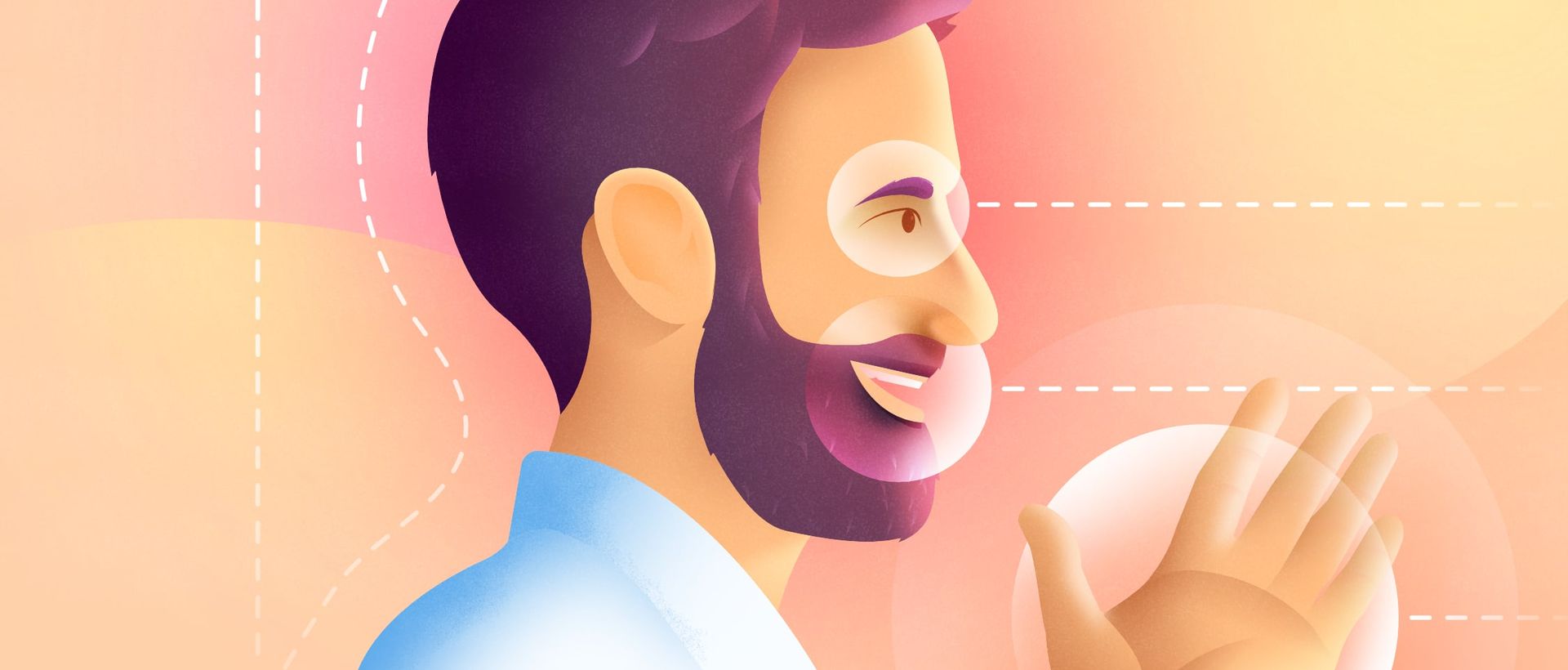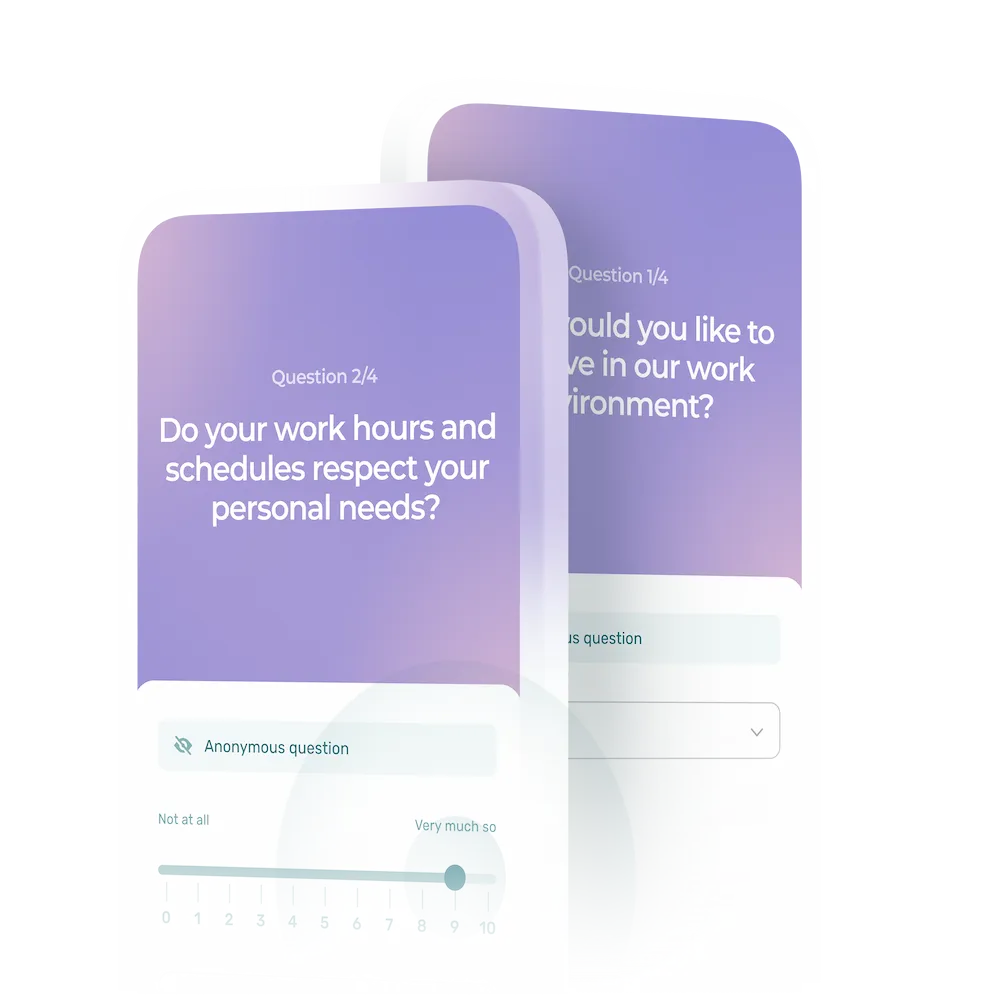Non-verbal communication significantly shapes both our personal and professional relationships.
Have you ever seen a pharmacy employee cross her arms and sigh with exasperation when her supervisor gave her critical feedback? Or noticed the sparkle in a friend’s eye when they told you about their latest rock-climbing adventure, as if they were reliving the moment?
These are two very explicit examples of non-verbal communication. If you notice such instances of nonverbal communication in your everyday life, kudos!
Below we explore a variety of non-verbal cues, including specific examples drawn from the workplace.
What Is Nonverbal Communication?
Non-verbal communication (also called body language) refers to the aspects of a conversation that aren’t conveyed in words. Among other things, this includes posture, gestures, facial expressions, pantomimes, gazes and intonation, which serve as unconscious delivery channels for our emotions.
These channels in turn shape the message we communicate to other people, in addition to any words we might say. They often involuntarily reflect our deep feelings about a situation.
Non-verbal communication can help us when we are truly expressing what we’re feeling—in other words, when we say what we think. Conversely, it can be problematic, for example, in the case of a carefully scripted speech that doesn’t align with our true feelings: when our words don’t reflect our deepest thoughts.
People considered to be authentic or outstanding communicators use body language that matches what they are saying. This is unsurprising since their body language is merely an extension of their thinking.
4 Components of Non-verbal Communication
1. Gaze
Our gaze conveys a huge amount of information to anyone who is able to read it. In fact, just making eye contact can sometimes be enough to answer a question. A warm look can be a balm to an overworked colleague or someone in need of help. An intense stare has the power to frighten or unsettle team members.
A gaze that is:
- Present: demonstrates attention
- Avoidant: expresses anxiety
- Distracted: reveals boredom
- Fixed: transmits anger
- Sustained: shows benevolence
- Eye-rolling: externalizes an annoyance
👀 Be sure to make eye contact with your colleagues. Staring down employees at length can make them uncomfortable, but maintaining an open, present gaze can also show that you are giving them your undivided attention.
2. Posture
Even when not a single word has been said, posture can readily convey a wealth of information. Overall stance, foot movement, and head position unconsciously carry messages.
Someone standing or sitting up straight with a warm smile and their feet planted in the ground will project self-confidence, strength of character, and even a certain charisma. These characteristics can be observed in strong leaders who inspire trust.
Conversely, someone with a shifty gaze, hunched back and shuffling feet will give off a nervous, unconfident and timid vibe. These characteristics will cast doubt on a manager’s competence.
🙅♀️ Pay attention to the posture of an employee standing in front of you. Crossed arms or legs may indicate a closed attitude. Leaning back away from you may indicate disagreement, while leaning in may indicate interest.
3. Hands and Gestures
Hands and gestures play a particularly interesting role in non-verbal communication. Movements are indicative of an individual’s state, and each gesture will be unconsciously analyzed by the people around them.
Gestures can undermine what someone said or influence the outcome of a negotiation. Quick, jerky movements signal nervousness. Broad, slow, controlled movements conversely display ease and confidence.
A few examples of gestures:
- Running hands through hair
- Touching the face or ears
- Pointing
- Clenching fists or drumming with fingertips
- Rubbing the nose, chin or mouth
- Ringing hands around the neck
- Head nodding or shaking
There are many nervous tics that are also considered gestures.
🤝 During interviews, handshakes are probably one of the most noticeable gestures in a professional setting. Who doesn’t remember a limp handshake? Or a handshake that was so firm we nearly lost a finger?
4. Facial Expressions
Have you ever heard the expression “reading someone like an open book”? Facial expressions often betray feelings and emotions, and allow us to read people. They occur completely involuntarily when our muscles contract, and are easily spotted by the people around us.
Certain subtle facial gestures can say a lot about our nature and our state of mind. During a performance evaluation, an employee with a strained smile who is biting their lip or scratching themselves repeatedly may be telling you that they’re uncomfortable.
According to psychologist and University of California professor emeritus Paul Ekman, our emotions are closely bound up with our facial expressions. His theory is that humans from all cultures share the same facial expressions for 7 basic universal emotions:
- Joy
- Sadness
- Anger
- Fear
- Disgust
- Contempt
Ekman’s research shows how these emotions are expressed through facial micro-expressions lasting less than one second. While some are easy to spot (tight lip, arched eyebrows, wrinkled forehead), others require a great deal of perceptiveness to catch (mouth slightly gaping, dilated pupils, barely detectable blink).
👥 During your next one-on-one meeting, try to observe your employee’s facial expressions. Are you able to identify certain emotions? Picking up on these subtle non-verbal cues will enhance your emotional intelligence as a manager.
4 Subtle Components of Non-verbal Communication
1. Silences
Communication would be impossible without moments of silence, which are essential if we are to listen to the other person. There are different types of silences that communicate different messages. Like words and other body language, silence can be appropriate or inappropriate.
A few examples of silences include:
- Moments of reflection
- Confusion or misunderstanding
- Taking some time to assimilate information
- Indifference
- Emotional reactions (sympathy, agitation, dissatisfaction)
🦗 When analyzing a silence, always consider the context and the other characteristics of nonverbal communication. For example, an employee who isn’t responding to an announcement you made that impacts their job may not have fully grasped the message you were trying to get across.
2. Voice and Paralanguage
Voice and paralanguage (pitch, speed, intonation, etc.) are inextricable and go far beyond the spoken word—it’s all about how things are said. They express the feelings of the speaker. Our voice can be warm when we’re listening empathetically, cooler during a technical presentation, and perhaps even authoritarian when delivering negative feedback.
Some things to look out for in voice and paralanguage:
- Intonation: tone that brings words to life and reflects feelings and intentions
- Rhythm: pace of speech that can pick up when the individual gets nervous
- Volume: sound level that naturally varies or adapts according to the context and feelings at hand
- Timbre: quality specific to each person, varying from high to low and when we are more tired or have a cold, for instance
📣 Pay attention to the answers your employees give you. The words “Yes, I’ll do it!” can convey different messages. Try testing this out loud. You’ll find that, when you factor in voice and paralanguage, a simple sentence has the power to convey far more than words.
3. Space
Are you surprised at this one? Yes, our use of space is also an aspect of non-verbal communication. You may not have noticed this before, but other people’s use of space affects both the transmission and reception of their message. We all have our “bubble”—our threshold of tolerance to other people’s physical proximity to us.
Our bubble will vary according to the context and the respective tolerance of the parties to the conversation. According to the theory of American anthropologist Edward T. Hall, our use of space is defined by 4 zones. Hall is believed to have defined them during his research on cultural perceptions of space, starting with his service in World War II and then his research with First Nations peoples and finally his fieldwork around the world.
- Intimate zone (15 to 45 cm / 6 to 18 inches): reserved for personal relationships, including with our partner, children, immediate family and close friends.
- Personal zone (45 cm to 1.2 m / 18 inches to 4 feet): used for professional and friendly relationships.
- Social zone (1.2 to 3.5 m / 4 to 11.5 feet): marks a hierarchy of speakers in which each person’s role is observed.
- Public zone (more than 3.50 m / 11.5 feet): zone in which the speaker has less influence because of a lack of direct eye contact with audience members.
Our choice of distance and our use of space when interacting with others communicate our conduct and intentions.
👯♀️ Study your team members’ use of space the next time they interact. You may notice that colleagues who are also friends use space differently than those who don’t know each other as well.
4. Rituals
Rituals include all the usual practices that we observe in common situations, such as introductions, thanks, greetings and separations. Unsurprisingly, these rituals vary from culture to culture.
A good example would be how we greet each other. In Quebec, the bise or peck on the cheek is commonly reserved for our family and close friends, while in France, it is also appropriate in professional contexts with colleagues. In the Western world, handshaking is commonplace in the business world, while in many Eastern countries, people will bow in greeting.
These country-specific rituals impact the quality of our communications. Mastering them can help avoid awkward situations or offending the people we’re talking to. Furthermore, being familiar with other people’s rituals is also essential to understanding their behavior at work.
🌎 Do you have a multicultural team? Take the time to survey your employees to find out what rituals they think are important in the workplace.
The Benefits of Being Able to Decipher Body Language
Although some of us have a knack for reading other people’s non-verbal cues, it is a soft skill that we can all easily learn. As a team manager, your ability to understand employees’ nonverbal communication plays an important role in their well-being.
What is more, being able to analyze your own non-verbal communication will help you better get your messages across. It is a touchstone of emotional intelligence.
If you’d like to learn how to read people better and understand their non-verbal cues, I highly recommend What Every Body Is Saying by Joe Navarro. This former FBI agent explains how to pick up on subtle non-verbal communication, and makes them easy to understand through examples drawn from his own experience. Happy reading!









